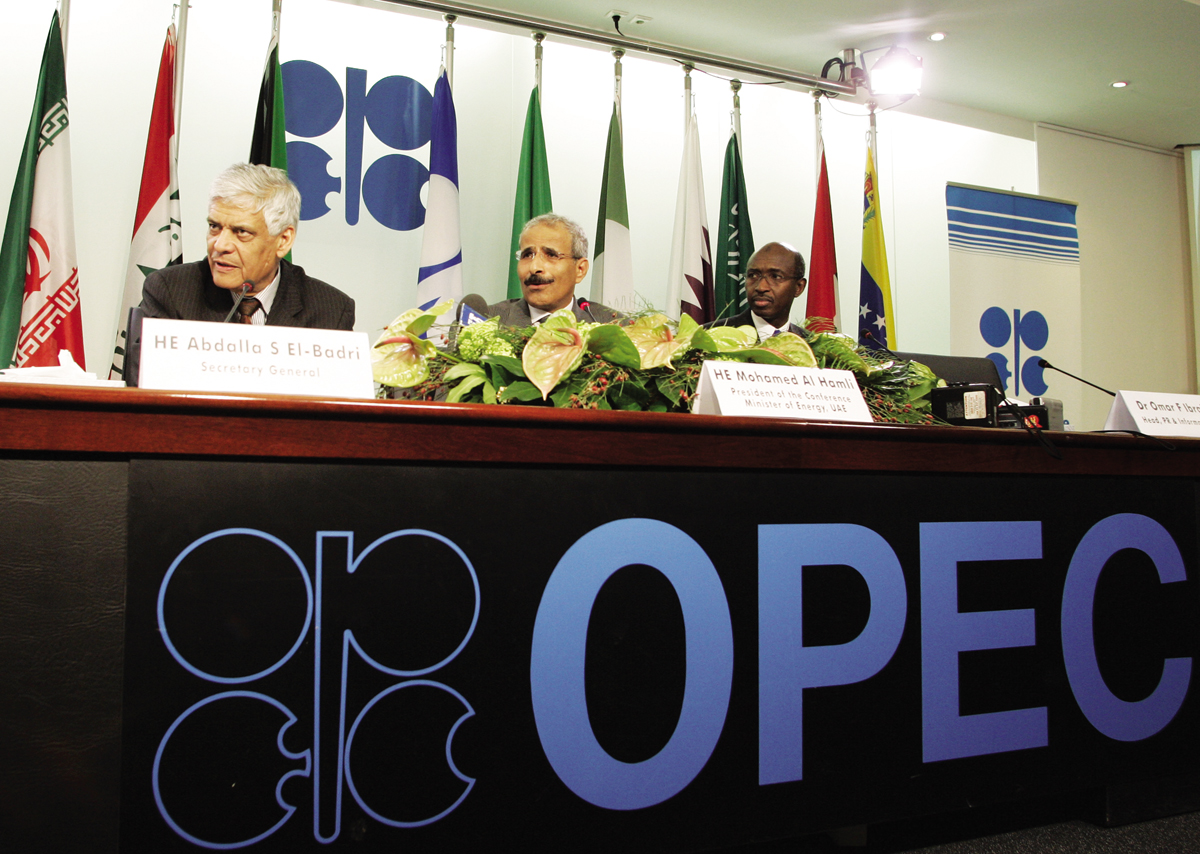Understanding Oligopoly
How much will a firm produce? Up to this point, we have always answered: the quantity that maximizes its profit. When a firm is a perfect competitor or a monopolist, we can assume that the firm will use its cost curves to determine its profit-
A Duopoly Example
An oligopoly consisting of only two firms is a duopoly. Each firm is known as a duopolist.
Let’s begin looking at the puzzle of oligopoly with the simplest version, an industry in which there are only two firms—
Imagine that there are only two producers of lysine (the animal feed additive mentioned in the section opener). To make things even simpler, suppose that once a company has incurred the fixed cost needed to produce lysine, the marginal cost of producing another pound is zero. So the companies are concerned only with the revenue they receive from sales.
AP® Exam Tip
Collusion is illegal in the United States but legal in some parts of the world.
Table 64.1 shows a hypothetical demand schedule for lysine and the total revenue of the industry at each price–
Table 64.1Demand Schedule for Lysine
| Price of lysine (per pound) | Quantity of lysine demanded (millions of pounds) | Total revenue (millions) |
| $12 | 0 | $ 0 |
| 11 | 10 | 110 |
| 10 | 20 | 200 |
| 9 | 30 | 270 |
| 8 | 40 | 320 |
| 7 | 50 | 350 |
| 6 | 60 | 360 |
| 5 | 70 | 350 |
| 4 | 80 | 320 |
| 3 | 90 | 270 |
| 2 | 100 | 200 |
| 1 | 110 | 110 |
| 0 | 120 | 0 |
If this were a perfectly competitive industry, each firm would have an incentive to produce more as long as the market price was above marginal cost. Since the marginal cost is assumed to be zero, this would mean that at equilibrium, lysine would be provided for free. Firms would produce until price equals zero, yielding a total output of 120 million pounds and zero revenue for both firms.
However, with only two firms in the industry, it would seem foolish to allow price and revenue to plummet to zero. Each would realize that with more production comes a lower market price. So, like a monopolist, each firm would see that profits would be higher if it and its rival limited their production.
So how much will the two firms produce?
Sellers engage in collusion when they cooperate to raise their joint profits. A cartel is a group of producers that agree to restrict output in order to increase prices and their joint profits.
One possibility is that the two companies will engage in collusion—they will cooperate to raise their joint profits. The strongest form of collusion is a cartel, a group of producers with an agreement to work together to limit output and increase price, and therefore profit. The world’s most famous cartel is the Organization of Petroleum Exporting Countries (OPEC).

As its name indicates, OPEC is actually a cartel made up of governments rather than firms. There’s a reason for this: cartels among firms are illegal in the United States and many other jurisdictions. But let’s ignore the law for a moment. Suppose the firms producing lysine were to form a cartel and that this cartel decided to act as if it were a monopolist, maximizing total industry profits. It’s obvious from Table 64.1 that in order to maximize the combined profits of the firms, this cartel should set total industry output at 60 million pounds of lysine, which would sell at a price of $6 per pound, leading to revenue of $360 million, the maximum possible. Then the only question would be how much of that 60 million pounds each firm gets to produce. A “fair” solution might be for each firm to produce 30 million pounds and receive revenues of $180 million.
But even if the two firms agreed on such a deal, they might have a problem: each of the firms would have an incentive to break its word and produce more than the agreed-
Collusion and Competition
Suppose that the presidents of the two lysine producers were to agree that each would produce 30 million pounds of lysine over the next year. Both would understand that this plan maximizes their combined profits. And both would have an incentive to cheat.
To see why, consider what would happen if one firm honored its agreement, producing only 30 million pounds, but the other ignored its promise and produced 40 million pounds. This increase in total output would drive the price down from $6 to $5 per pound, the price at which 70 million pounds are demanded. The industry’s total revenue would fall from $360 million ($6 × 60 million pounds) to $350 million ($5 × 70 million pounds). However, the cheating firm’s revenue would rise, from $180 million to $200 million. Since we are assuming a marginal cost of zero, this would mean a $20 million increase in profits.
But both firms’ presidents might make exactly the same calculation. And if both firms were to produce 40 million pounds of lysine, the price would drop to $4 per pound. So each firm’s profits would fall, from $180 million to $160 million.
The incentive to cheat motivates the firms to produce more than the quantity that maximizes their joint profits rather than limiting output as a true monopolist would. We know that a profit-
A positive quantity effect: one more unit is sold, increasing total revenue by the price at which that unit is sold.
A negative price effect: in order to sell one more unit, the monopolist must cut the market price on all units sold.
The negative price effect is the reason marginal revenue for a monopolist is less than the market price. But when considering the effect of increasing production, a firm is concerned only with the price effect on its own units of output, not on those of its fellow oligopolists. In the lysine example, both duopolists suffer a negative price effect if one firm decides to produce extra lysine and so drives down the price. But each firm cares only about the portion of the negative price effect that falls on the lysine it produces.
This tells us that an individual firm in an oligopolistic industry faces a smaller price effect from an additional unit of output than a monopolist; therefore, the marginal revenue that such a firm calculates is higher. So it will seem to be profitable for any one firm in an oligopoly to increase production, even if that increase reduces the profits of the industry as a whole. But if everyone thinks that way, the result is that everyone earns a lower profit!
When firms act in their own self-
Until now, we have been able to analyze producer behavior by asking what a producer should do to maximize profits. But even if the duopolists are both trying to maximize profits, what does this predict about their behavior? Will they engage in collusion, reaching and holding to an agreement that maximizes their combined profits? Or will they engage in noncooperative behavior, with each firm acting in its own self-
Now you see why oligopoly presents a puzzle: there are only a small number of players, making collusion a real possibility. If there were dozens or hundreds of firms, it would be safe to assume they would behave noncooperatively. Yet, when there are only a handful of firms in an industry, it’s hard to determine whether collusion will actually occur.

Since collusion is ultimately more profitable than noncooperative behavior, firms have an incentive to collude if they can. One way to do so is to formalize it—
Sometimes, as we’ve seen, oligopolistic firms just ignore the rules. But more often they develop strategies for making the best of the situation depending on what they know, or assume, about the other firms’ behavior. In some cases, oligopolists repeatedly undercut each others’ prices—

Understandably, oligopolists would prefer to avoid direct price competition that leaves them earning zero economic profit. One strategy for limiting competition is to produce products that are not perfect substitutes but are instead differentiated. We’ll examine this strategy in more detail in Module 68. For now, we note that producing differentiated products allows oligopolists to cultivate a loyal set of customers and to charge prices higher than marginal cost.
Collusion is another approach to dodging the profit-
The Great Vitamin Conspiracy
The Great Vitamin Conspiracy
It was a bitter pill to swallow. In the late 1990s, some of the world’s largest drug companies (mainly European and Japanese) agreed to pay billions of dollars in damages to customers after being convicted of a huge conspiracy to rig the world vitamin market.
The conspiracy began in 1989 when the Swiss company Roche and the German company BASF began secret talks about raising prices for vitamins. Soon a French company, Rhone-
How could it have happened?
The main answer probably lies in different national traditions about how to treat oligopolists. The United States has a long tradition of taking tough legal action against price-
